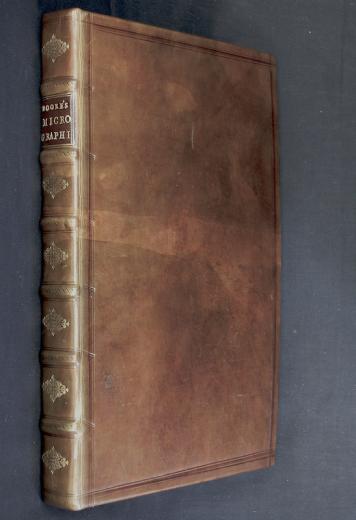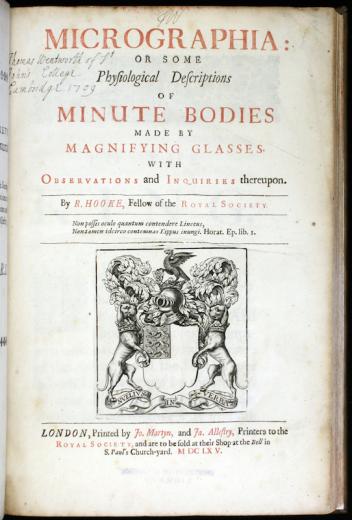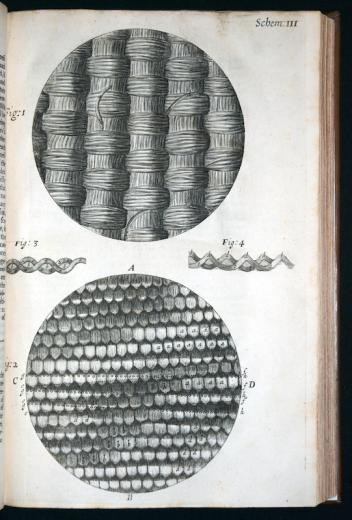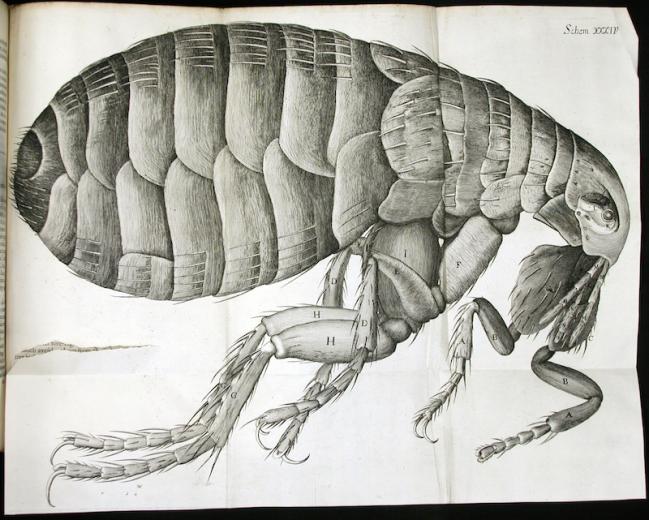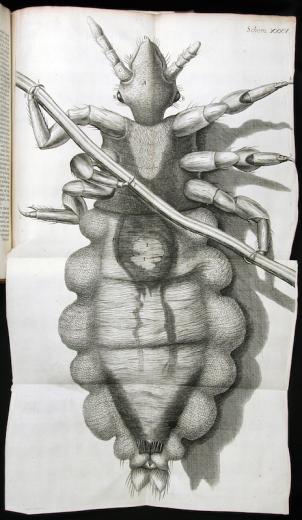Citation
Item Location
Hooke’s Micrographia is the most remarkable visual treatise of 17th century microscopy. In describing the appearance of cork, Hooke coined the term “cell.” Hooke’s large fold-out plate of the flea is unforgettable. In another fold-out plate, the rod-like strand of hair is the give-away that the alien creature depicted there is simply a louse. Hooke was even able to see traces of internal organs. Hooke’s microscope was compound, with two lenses. The mount, while stabilizing the instrument, allowed it to be focused by sliding the tube inside the ring. Another illustration shows one of the earliest sketches of a specific location on the surface of the Moon. Ever since their early development in the Academy of the Lynx, the stories of the microscope and telescope remained intertwined through the 17th century.
Related Items
Resource Type: Book




